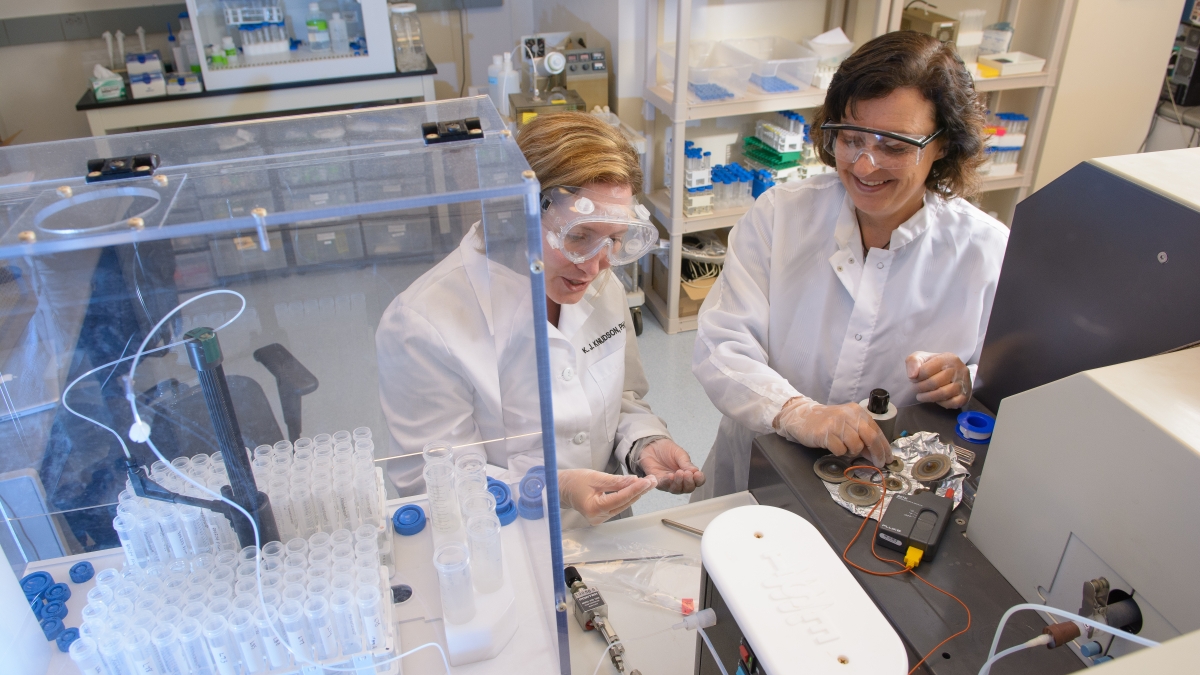ASU team unlocks clues in unidentified human remains

Like something out of “CSI” or “Bones,” researchers at Arizona State University are working to solve the mysteries of unidentified human remains – and just as on those TV shows, science plays a key role.
Gwyneth Gordon, an associate research scientist in ASU’s School of Earth and Space Exploration, will soon be making a trip to academia’s most distinctive research facility: the University of Tennessee’s Anthropological Research Facility, the original “Body Farm.”
At the facility’s open-air crime labs, decomposing corpses are left out in the elements, some on the ground and others in shallow graves. Gordon will collect samples from the cadavers and samples of soil and groundwater; in May, she’ll do the same thing at Texas State University in San Marcos.
With funding from the Department of Justice’s National Institute of Justice, Gordon and professors Kelly Knudson and Ariel Anbar will study how various isotopes in the human body behave during decomposition in different environments. These techniques have long been used in the anthropologic study of migration and lifestyle of ancient peoples, but only recently have begun to be used in modern cases of homicide, mass graves and unidentified migrants.
With some 10,000 open cases of unidentified human remains in the U.S. today, the research’s results will have real-life implications for law enforcement, medical examiners and families looking for answers.
“Can our technique unravel a human story that was previously lost to history? That’s what we’re trying to find out,” Gordon says. “The donor histories provide premortem travel and geographic life histories, and we’ll see if our analyses match their life histories.”
Unlocking clues hidden in bones
Every molecule in our bodies is made up not just of different elements, but of different ratios of stable isotopes of those elements. They leave an isotopic signature that can speak for the dead, revealing diet, birthplace and travel history.
Samples collected at the body farms – including hair, tooth enamel and skeletal elements – will be analyzed at ASU for oxygen and hydrogen isotopes to determine latitude; carbon and nitrogen to obtain dietary history; and strontium and lead isotopes and trace elements to establish the type of bedrock where the deceased was born or lived.
Sample preparation will occur both in the School of Earth and Space Exploration and in collaboration with the Archaeological Chemistry Laboratory under the supervision of archaeological chemist Kelly Knudson, associate professor in ASU’s School of Human Evolution and Social Change and affiliated with the Center for Bioarchaeological Research.
Knudson uses biogeochemistry and bioarchaeology to answer anthropological research questions. She is a world expert on the application of isotopes to archaeological sites and individuals.
“As an archaeologist, I am more used to working with people who died hundreds or thousands of years ago. Applying my knowledge to forensics applications and, eventually, to helping to solve modern cases is one of the things that really appeals to me about our research project,” Knudson says.
Finding migrants’ birthplace
The sites of the two body farms have very different climates and soil types. Tennessee – very wet – is similar to significant portions of the United States, while the dry Texas site is similar to the U.S.-Mexico border.
“We chose that site explicitly because of the large number of undocumented immigrants who die in the desert while trying to get to the U.S. These individuals often have no identification on them, and their families never know what happened to them,” Gordon says. “There’s also commonly no DNA to match them to. If we can get a better idea where they were from using isotopes, the search for their families would be significantly easier.”
According to Knudson, archaeologists have been using isotopic data to figure out people’s diets for more than 30 years, while using that data to determine someone’s birthplace has been common only in the past 15 years.
“These techniques haven’t been used quite as much in forensic anthropology, despite what you may see on ‘CSI’ or ‘Bones,’ ” she says.
While stable isotopes have proven themselves useful, they aren’t staples of forensic science – yet. However, a number of case studies have demonstrated that these types of information can narrow the search and help discover a person’s identification.
“What I think is great about this research is that we are doing the kinds of baseline research into how these isotopes act during decomposition so that the forensics community can use them,” Knudson says.